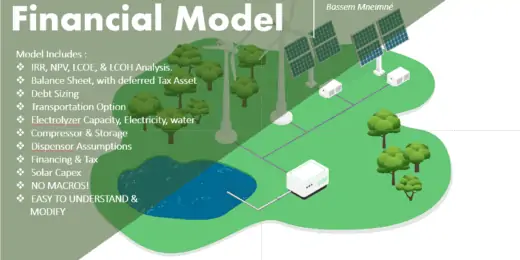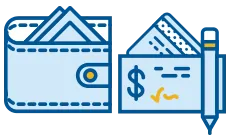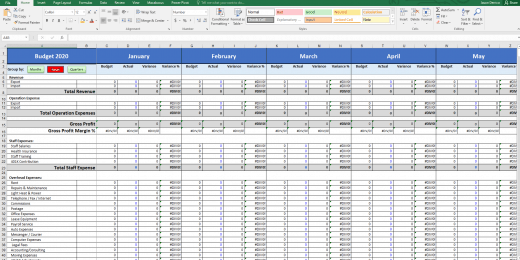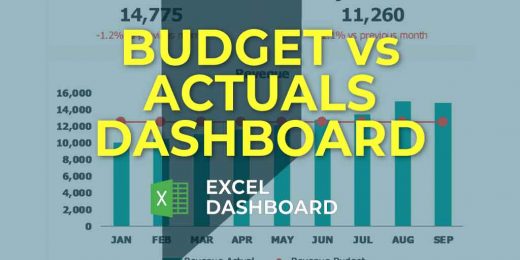Mastering Budget Vs Actual Spending Template: A Step-By-Step Guide

Mastering a budget vs actual spending template streamlines financial tracking and analysis. It helps in pinpointing deviations and enhancing fiscal discipline.
Grasping the essentials of a budget versus actual spending template empowers individuals and businesses to manage finances with precision. By meticulously comparing projected expenses and income against real figures, one can quickly identify financial discrepancies, make informed decisions, and set the stage for improved financial health.
In a world where fiscal accountability is paramount, such a template serves as a critical tool for maintaining a clear view of one’s financial landscape. This step-by-step guide is designed to simplify the process, ensuring that even those new to budgeting can adopt this effective practice with ease. With a clear layout and accessible approach, this guide invites users to confidently align their financial plans with actual outcomes.
Introduction To Budgeting
Welcome to the fundamental step in managing your finances: budgeting. A budget acts as your financial roadmap, guiding you through each month’s spending decisions. Think of it as a friendly coach, always there to help you make smart money moves. By setting a budget, you embrace a powerful tool to track income, control expenses, and save for future dreams.
The Role Of Budgeting In Personal Finance
Budgeting is critical for financial health. It helps people plan for the future, track where their money goes, and ensures they live within their means. With it, you can pinpoint areas to save and identify bad spending habits. Here’s how budgeting serves you:
- Sets Clear Goals: You define what matters most and allocate funds accordingly.
- Prevents Debt: Spending within limits keeps debt at bay.
- Readies for Emergencies: A savings safety net becomes possible with disciplined budgeting.
- Leads to Financial Freedom: Over time, smart budgeting can turn dreams into reality.
Variances: Understanding Budget Vs. Actual
When you compare your planned budget to actual spending, you’re looking at ‘variances’. This practice is vital for financial control. By spotting the differences early, you can adjust habits or your budget to stay on track.
| Category | Budgeted Amount | Actual Spending | Variance |
|---|---|---|---|
| Groceries | $300 | $350 | $50 Over |
| Utilities | $150 | $130 | $20 Under |
Regular reviews highlight where to cut back or where you might have wiggle room. Turning a lens on these variances empowers you to make informed decisions that align your actual spending with your financial aspirations.
Choosing The Right Template
Managing money starts with choosing the right template.
The perfect fit keeps finances in check and simplifies comparison.
Key Features Of An Effective Template
A stellar budget versus actual spending template must tick essential boxes.
Let’s explore these features together.
- Easy to understand: Users should grasp the layout at a glance.
- Flexibility: It adjusts to various income and expense categories.
- Accuracy: Math errors are a big no. It must calculate correctly.
- Visual Elements: Charts and graphs turn data into insights swiftly.
- Adaptability: An ideal template evolves with financial changes.
Popular Budgeting Tools And Templates
On the hunt for the right financial co-pilot?
Check these go-to tools.
| Tool Name | Type | Key Benefit |
|---|---|---|
| Excel Budget Template | Spreadsheet | Customizable, familiar |
| Google Sheets Budget Template | Spreadsheet | Accessible anywhere, shareable |
| Mint | App | Automated tracking, free |
| YNAB (You Need A Budget) | App | Robust, zero-based budgeting |
Setting Up Your Template
Mastering your finances starts with a solid foundation. A budget vs actual spending template is essential to track where your money goes. Setting up your template correctly makes managing your finances easier. Let’s dive into how to customize your template efficiently.
Inputting Initial Data
Begin with the basics. You’ll need to collect all financial statements. This includes bank statements, bills, and receipts. Lay out the infrastructure for your budget by creating a new spreadsheet.
- Label the columns: Start Date, End Date, Category, Budgeted Amount, Actual Amount, Difference.
- Enter the timeframe: Input the start and end dates for your budget period at the top of your spreadsheet.
- Add your income sources: Under the Category column, label rows with titles such as “Job”, “Freelancing”, or “Investments”.
- Fill in budgeted figures: Next to each category, enter what you anticipate you will spend or earn.
Customizing Categories For Your Needs
We each have unique spending habits, so tailor your template to reflect your lifestyle. Categories should match how you think about your money. Think of the key areas where you spend regularly.
- Edit the default categories: Rename them to fit your personal spending.
- Add new categories: Right-click a row and click “Insert” to add a new category, like “Pet Care” or “Hobbies”.
- Remove what’s not needed: Delete any pre-set categories that don’t apply to your situation.
Tip: Keep your categories broad enough to avoid confusion but specific enough for clear insights into your spending habits.
Projecting Your Budget
Projecting your budget is a cornerstone of financial planning. It means predicting how much money you’ll have and where it will go. A well-projected budget keeps you on track and helps avoid overspending. Mastering this aspect is crucial for both personal finance and business accounting.
Estimating Income Streams
Knowing your expected income is step one. List all your income sources. This includes full-time jobs, part-time gigs, and any side hustles. Be realistic. If income varies, calculate an average. This becomes your working figure. Put your income details in a table format for clarity.
| Source | Amount | Frequency |
|---|---|---|
| Main Job | $3000 | Monthly |
| Part-Time Work | $500 | Weekly |
| Other Income | $250 | Occasional |
Anticipating Monthly Expenses
Just as with income, list every anticipated expense. Break them down by category. Include fixed costs like rent and car payments. Also, add variable expenses like groceries and entertainment. Use an ordered list to prioritize expenses from most to least critical.
- Rent or Mortgage
- Utilities
- Groceries
- Transportation
- Insurance
- Entertainment
- Emergency Fund
After listing expenses, calculate the total. Compare this to your income. This helps you see if you can cover all expenses. If not, adjust accordingly. You might need to cut back on non-essential items.
Tracking Actual Spending
Keeping track of every penny is crucial in mastering your financial blueprint. Tracking Actual Spending ensures you stick to your budget.
Recording Day-to-day Expenditures
To start, record every expense, no matter how small. It’s easy to overlook daily coffee or online subscriptions, but they add up. Use simple methods to stay on course.
- Write it down: Carry a small notebook or use a mobile app.
- Save receipts: They are perfect records of your purchases.
- Digital tracking: Many banks offer apps to categorize spending.
Here’s a sample template to record daily spending:
Additional rows as needed
| Date | Description | Category | Amount |
|---|---|---|---|
| 03/15 | Coffee | Food & Drinks | $3.50 |
| 03/15 | Bus fare | Transport | $2.25 |
Regularly Updating Your Template
Updating your template should become a routine task. Make it a daily or weekly habit. Use these strategies to stay current:
- Set reminders: Alarms on your phone can prompt updates.
- Link bank accounts: Some templates sync with your transactions.
- Review regularly: Check your budget alongside your actual spendings.
Edit your template with the latest information for accuracy. This ensures you know where your money goes. A well-maintained template can reveal spending habits. It highlights where to cut back to save money.
Analyzing Budget Variance
Analyzing budget variance is key to mastering your finances. It shows where money was spent versus what you planned. This helps you spot mistakes and make better plans. We dig into two crucial steps: Identifying Overspending and Adjusting Budget Projections.
Identifying Overspending
Finding where you spent too much is the first step. Look at your budget and what you actually spent. Make a list of areas where spending was higher than planned.
Add more rows as needed
| Budget Category | Budgeted Amount | Actual Spending | Variance |
|---|---|---|---|
| Groceries | $150 | $200 | $50 over |
Color-code items to make overspending stand out. Use red for over budget areas. This visual aid helps in understanding where to focus.
Adjusting Budget Projections
Once you see where you overspent, it’s time to adjust. Updates can mean changing future budgets or cutting costs.
- Review each over budget category.
- Decide if spending can be lowered, or if the budget needs growth.
- Update your budget template with new amounts.
Keep adjusting monthly to stay on track with your spending goals. Regular checks mean no surprises.
Making Informed Financial Decisions
Mastering the Budget Vs Actual Spending template guides your finances. It’s key to smart money management. Understanding where your money goes ensures better choices. Let’s dive into how this tool helps in cutting costs and revisiting financial goals.
Using Data To Cut Costs
Tracking spending is eye-opening. It’s the first step to cost-cutting. Here’s how:
- Identify overspending: Compare budgeted vs actual expenses.
- Spot trends: Notice recurring, unnecessary expenses.
- Adjust habits: Reduce or eliminate excessive costs.
| Category | Budgeted | Actual | Difference |
|---|---|---|---|
| Groceries | $300 | $350 | -$50 |
| Dining Out | $150 | $250 | -$100 |
Reshaping Financial Goals
Smart goals keep finances on track. Use insights to reshape them:
- Review goals based on current spending.
- Set realistic, achievable targets.
- Align budget to meet financial objectives.
Pinpoint what’s essential. Aim for balance. Make changes for a solid financial future.
Maintaining Financial Discipline
Mastering your budget versus actual spending is crucial to maintaining financial discipline. This section breaks down simple steps to guide you through keeping your finances in check.
Creating A Routine For Review
Establish a regular schedule to analyze your budget and actual expenses. This habit ensures that you are always aware of your financial status.
- Choose a consistent day and time each week for review.
- Use reminders to keep you on track.
- Check your spending against your budget.
- Adjust as necessary to stay aligned with your financial goals.
Staying Accountable For Spending Goals
Sticking to spending goals requires accountability. Here’s how to keep yourself on the straight and narrow:
| Goal | Action | Result |
|---|---|---|
| Track Daily Expenses | Write down or use apps for tracking | Better understanding of spending habits |
| Set Spending Limits | Create boundaries for different budget categories | Prevent overspending |
| Weekly Assessment | Review and compare with goals | Spot issues early |
Engage a buddy or join a finance community to share progress and challenges.
It’s all about taking practical steps toward total financial control.
Adapting To Financial Changes
Mastering your budget requires flexibility and adaptability, as financial situations are ever-changing. When life throws a curveball, adjusting your budget vs. actual spending template helps you stay on track financially. This essential guide walks you through the steps to adapt effectively.
Incorporating New Income Or Expenses
Financial landscapes change, sometimes overnight. Recognize the need to reflect new income streams or unexpected expenses in your budget. Regularly updating your finances ensures accuracy and prevents overspending. Below are steps to seamlessly integrate changes:
- Review your template monthly to pinpoint variations in income or expenses.
- Add new income sources under the ‘Income’ section to update your total earnings.
- Categorize and enter any new expenses to keep your spending targets accurate.
- Adjust savings goals if disposable income increases or decreases.
Revising The Budget For Major Life Events
Big life events mean big financial shifts. Whether you’re getting married, buying a home, or welcoming a new family member, your budget needs to reflect these milestones. Follow these tips:
- Analyze the financial impact of the event and estimate new expenses.
- Revise your budget categories to include any additional funds needed for the event.
- Rebalance your budget post-event to accommodate long-term changes.
Leveraging Insights For Future Planning
Understanding how to master your budget versus actual spending template is crucial. It’s like having a financial GPS. This guide unlocks the route for better money management. It helps you pinpoint differences in your budget and actual spending. With the right tools, you can chart a course for a more secure future. Let’s dive into leveraging insights for future planning.
Learning From Past Spending Patterns
Mistakes are just lessons in disguise. Examining your past spending reveals habits you can improve. It’s simple: look at where your money went and ask why. Did you overspend on dining out? Are there subscriptions you forgot to cancel? Make note of these patterns.
Make better choices next time. Use findings to adjust your budget. This way, you avoid repeating mistakes. Your template transforms past oversights into future saves.
Setting Up For Long-term Financial Success
Your ultimate goal? Financial stability. It’s within reach with disciplined budgeting. Having a clear budget versus actual spending comparison makes setting financial goals easier.
Start small with achievable targets. Maybe it’s saving for an emergency fund or paying down debt. Your template is a roadmap to success.
Stay focused on your financial targets. Consistently review your spending against your budget. Adjust as needed. This ensures you are always steering towards your financial goals.
Frequently Asked Questions
How Do You Do Budget Vs Actual Spend In Excel?
Create two columns in Excel, one for ‘Budget’ and one for ‘Actual Spend’. Enter your budgeted amounts and actual expenses. Use a formula to calculate the variance: ‘=Actual Spend – Budget’. This will show over or under spending per item or category.
What Is Budget Vs Actual Template?
A budget vs actual template is a financial tool that compares projected budget numbers to real-world spending and income, highlighting variances for analysis and adjustment.
How Do I Create A Budget Template?
To create a budget template, choose a software like Excel, list income sources and expenses, set monthly expense categories, input projected and actual figures, and monitor for adjustments. Use built-in templates or create custom columns for a personalized budget.
What Is The Difference Between Budget Planned And Actual?
A budget planned is an estimate of income and expenditure, while an actual budget reflects the real amounts spent and earned.
Conclusion
Embracing the power of a budget vs actual spending template elevates financial clarity and control. This step-by-step guide demystifies the process, providing a clear path to managing your finances. With consistent application, you’re well on your way to achieving your financial goals and ensuring a healthier economic future.
Make every penny count—start today!



















































